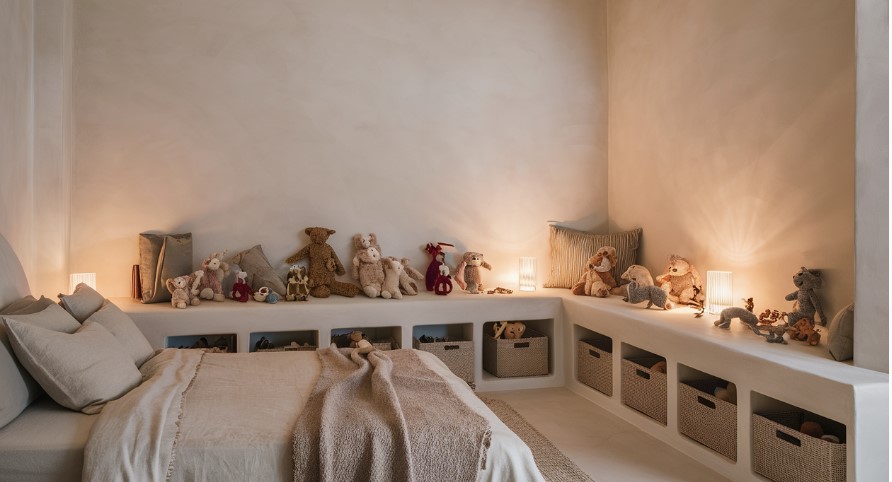7 Must Declutter Bedroom Toys Ideas
Creating a calm, organized bedroom can seem hard, especially with toys everywhere. But it doesn’t have to be. Simple strategies can transform your child’s play area into a peaceful space.
This blog will share ways to declutter bedroom toys. You’ll gain space and teach kids about organization.
Using smart storage and involving kids makes a difference. These tips simplify your bedroom and encourage thoughtful play. Say goodbye to clutter and welcome a peaceful bedroom!
1. Sort and Categorize Toys
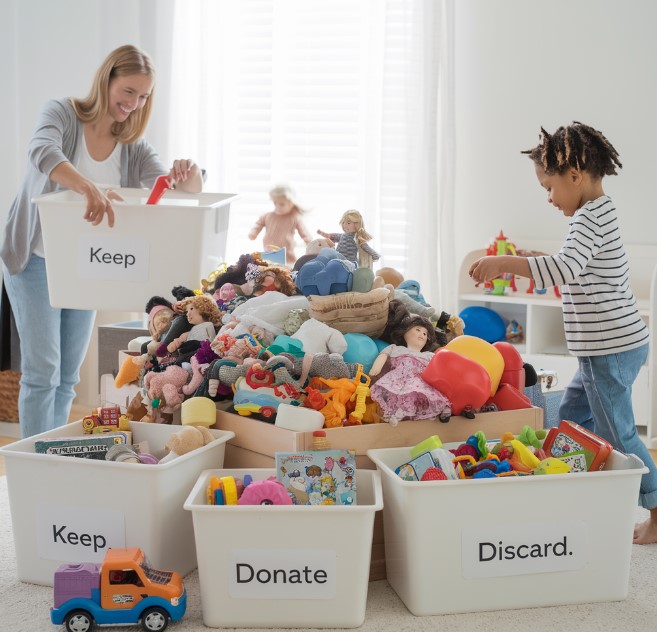
Sorting and categorizing toys is a vital first step in the decluttering process. Gather all toys into a central pile. This will show you the large number of items to organize.
It’s easier to determine what to keep, donate, or discard.Once you have everything in one place,
Next, categorize the toys by type. Grouping items into categories, like dolls and vehicles, simplifies decision-making.
This method helps you find unused toys and duplicates. It also helps kids find and return items to their spots.
As you categorize, consider your child’s play habits. Keep the toys that spark joy and engage their imagination.
A streamlined toy collection creates a more organized, inviting space. It fosters calm and encourages kids to take care of their things.
2. Establish a Toy Limit
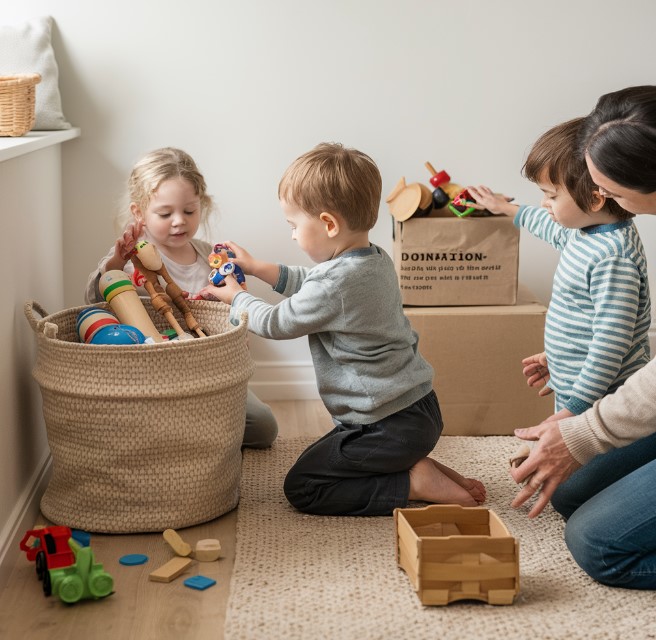
A toy limit is a powerful way to declutter bedroom toys and create a more organized space.
One effective method is to designate a specific storage container for toys, such as a bin or basket.
Only keep toys that fit inside.
Involving your children in this process is essential.Let them to pick their favorite toys to keep. This builds a sense of ownership and responsibility.
Ask questions like, “Which toys do you play with the most?” , It lets them decide about their things. They learn to value quality over quantity.
Discuss donating or recycling unloved, unused toys, as they pick up their favourite toys
It declutters the space. It also teaches kids about generosity and making room for new experiences. A toy limit will create a more peaceful, enjoyable bedroom for all.
3. Implement a Toy Rotation System
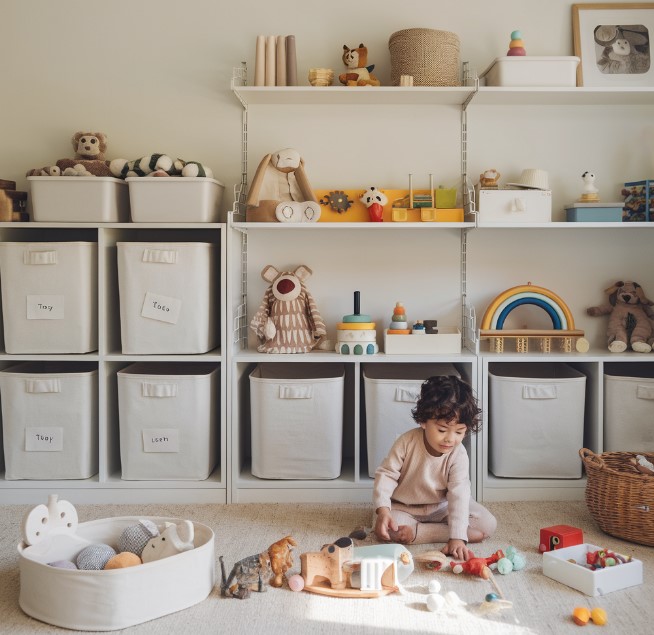
A toy rotation system can cut bedroom clutter and keep playtime exciting.
The idea is simple: only a few toys are out. They store the rest away. This makes the room tidier and playtime more organized.
There are many benefits. First, rotating toys makes them feel new and exciting. When old toys come back, they spark new interest and creativity.
This leads to more meaningful play. Kids rediscover forgotten favorites.
Moreover, a smaller selection of toys encourages better care. It teaches kids about organization and being mindful of toys.
In short, adopting this system makes your child’s room neat and boosts creativity.
4. Create Functional Zones
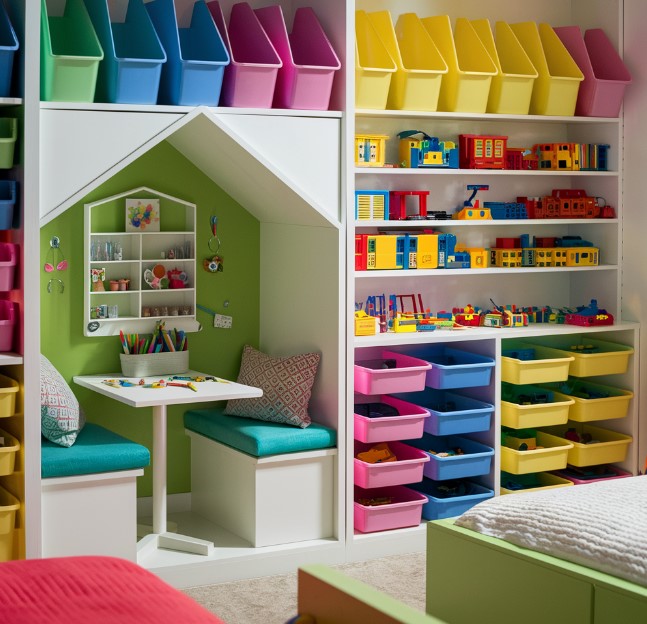
Creating zones in your child’s room can greatly reduce toy clutter.
For example, set up a cozy area for arts and crafts. Also, create a corner for building sets. This helps your child learn organization and responsibility.
Tailor each zone to its activity. This makes it easy for your child to find and return toys.
Use colorful bins or labeled shelves for fun and clarity.
This method simplifies cleaning and encourages deeper play.
With defined zones, kids value their toys and learn to keep things tidy. This builds lifelong habits.
So, consider functional zones to make your child’s room welcoming and tidy.
5. Incorporate Storage Solutions
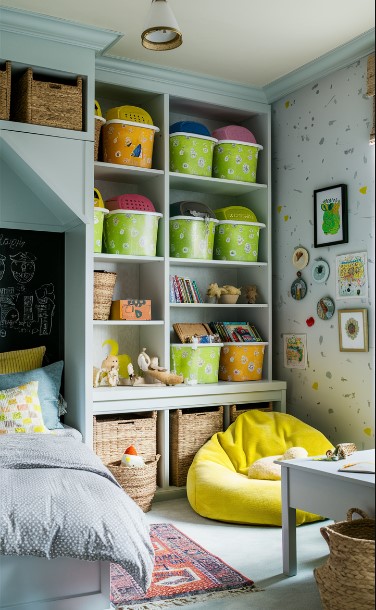
Good storage is vital for keeping bedroom toys tidy and organized.
Start with baskets, bins, or shelves. Baskets store big items and fit under beds or in closets. Lidded bins keep small toys dust-free.
Open shelves make toys easy to reach and cleaning simple.
Also, consider how storage looks. It should match the room. Choose fun patterns, soothing colors, or stylish designs.
This enhances the room and also makes kids care about their space.
By blending functionality with beauty, you create a welcoming area.
This encourages kids to stay organized and responsible. It turns chaos into a peaceful space for rest and play.
6. Encourage Donation and Sharing
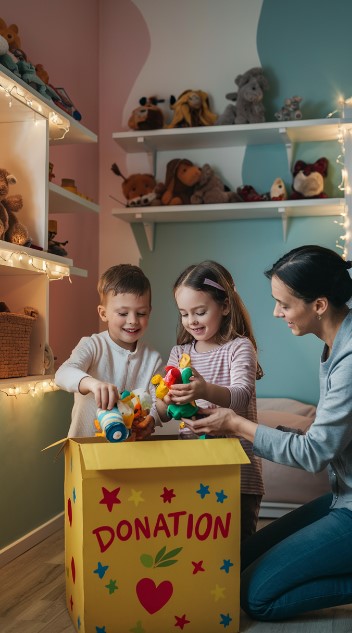
Encouraging donations and sharing can instill generosity in children. It also helps declutter their toys.
Begin by discussing the importance of donating unused toys. Their old toys can bring joy to children in need.
This talk can help kids see why helping others is important. It will foster empathy and a spirit of community.
Create a “donation box” in the bedroom. This lets children check their toys so that they can choose which ones to discard. To make the process tangible
At the end of each season, set a routine. Go through the box together. Make it a fun, rewarding activity.
Encourage kids to consider which toys to share. It reinforces that sharing is a kind, impactful gesture.
This practice keeps your space clutter-free. It also teaches the joy of giving and of being generous.
7. Capture Memories with a Keepsake Box
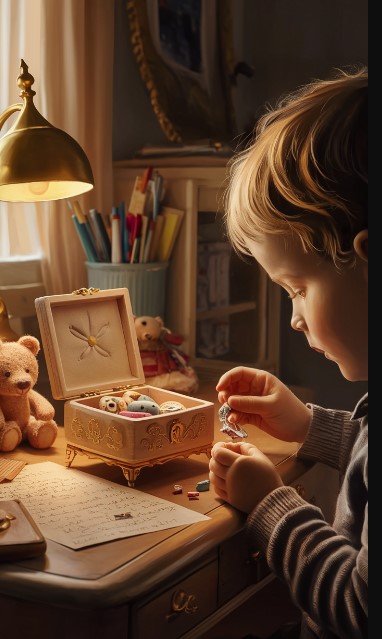
Childhood needs memories. A keepsake box is ideal for storing toys and reducing clutter.
Get a box for your child. They can keep special items, like a favorite stuffed animal or toy.
It helps them stay organized and reflects what matters to them.
Limit the box’s size to prevent overflow. A small box or drawer works well.
Encourage your child to select items. Emphasize quality over quantity. This builds decision-making skills and appreciation for meaningful possessions.
Allowing children to choose fosters a sense of ownership and responsibility.
A keepsake box not only declutters but also creates a memory collection to revisit.
Conclusion
In conclusion, cleaning up bedroom toys makes the space more organized and welcoming.
Parents can sort toys by type, age, or use. Involving children makes it easier.
Storage bins, shelves, and under-bed areas keep toys handy yet hidden. This promotes cleanliness.
Frequent checks and donations of toys reduce clutter. It also teaches kids about sharing and making room for new things.
A tidy toy collection indeed creates a calm bedroom. This encourages creativity and play without crowding the space.
1. What are effective methods for decluttering bedroom toys?
To declutter bedroom toys with a clear strategy:
Sort toys: Group by type, like stuffed animals or art supplies. This shows what you have.
Set limits: Decide how many of each toy to keep. This controls the amount and promotes careful choices.
Involve Children: Get kids involved. Ask them to choose their favorites. Then, explain why people need to donate or throw away some toys.
Use clear bins: Buy clear bins or baskets. This makes visibility easy. Label them to help kids know where to put the toys.
Regular checks: Plan decluttering sessions every season or before birthdays. This keeps collections small and organized.
2. How often should I declutter my child’s bedroom toys?
Regularly clear out your child’s toys to keep the room organized. Aim to do this every 3 to 6 months. If it gets too cluttered, do it sooner.
Consider seasonal clean-ups, as kids’ needs change quickly. Involve your child in deciding what to keep, donate, or toss. This teaches them decision-making and responsibility.
After birthdays or holidays, review the toys again. Regularly decluttering prevents future mess. It fosters a calm, creative space.
3. What should I do with toys that are in good condition but no longer played with?
For unused but good-condition toys, consider these options:
Donate: Find local charities, shelters, or schools that accept toy donations. Ensure the toys are clean and safe for other children to enjoy.
Sell: Host a garage sale. Or, use sites such as Facebook Marketplace, eBay, or local buy/sell groups to sell toys that have been used with care.
Gift: Consider gifting them to friends or family with younger kids. They might appreciate it.
Check if you can recycle the toys, especially if they’re made of plastic.
Repurpose: Get creative! Use toys in art projects or as decorative items in your home.
Organize your belongings using methods that are kind to the environment. This creates space and keeps the toys joyful for others.
4. How can I involve my child in the decluttering process?
Involving your child in decluttering can teach them to be organized. It will also foster a sense of responsibility.
Make it a fun activity. Set a timer. Challenge them to sort their toys or clothes within that time.
Use simple categories like “keep,” “donate,” and “trash.” Encourage them to decide which items they truly value and want to keep.
Offer praise for their decisions to build confidence. Make it a routine, like seasonal decluttering or pre-holiday cleaning, to prevent clutter.
Also, create a reward system for successfully decluttering their space. It adds motivation.
Lastly, lead by example. Show your decluttering efforts to inspire them to join you.
5. What storage solutions work best for keeping toys organized in a bedroom?
To keep toys organized in a bedroom, consider these effective storage solutions:
Baskets and Bins: Use colorful bins or baskets to categorize toys. Label each container for easy access.
Shelving Units: Install open shelving to display toys while keeping them accessible. This encourages children to return toys after playtime.
Under-bed storage: Use boxes or drawers under the bed for larger items or seasonal toys. This will maximize unused space.
Wall-Mounted Storage: Use wall-mounted racks or pockets for small toys. They keep them off the floor and within reach.
Toy chests: A classic toy chest can provide ample storage and double as a seating area.
Rotating Toy System: Use a rotation system to limit available toys. This will reduce clutter and keep kids interested.
6. How can I determine which toys to keep and which to donate?
Deciding which toys to keep or donate takes careful thought. First, involve your child. Ask them to pick their favorites.
Then, check each toy. If it hasn’t been used in a year, consider donating it. Look at its condition. If it’s broken or missing parts, toss it. Also, think about age. Donate toys your child has outgrown.
Finally, keep toys that boost creativity and learning. Let go of those for just fun.
Following these steps clears your space and helps other kids.
7. What are some creative ways to repurpose old toys?
Repurposing old toys can reduce clutter and add new life. Here are some ideas:
Toy Planters: Turn trucks or dolls into planters for succulents or herbs.
Art Display: Frame small toys or use a shadow box for unique wall art.
Drawer organizers: Use shallow bins to sort office or craft supplies.
Holiday Decorations: Add seasonal touches to action figures or plush toys. Make them festive decor.
Unique Shelves: Attach toy cars or blocks to a board for fun shelf décor in kids’ rooms.
Game Pieces: Use board game pieces for DIY crafts, like jewelry or keychains.
Educational Tools: Teach counting, colors, and shapes with toys in a fun way.
